(Note: This will, by the way, be positively my last 'Pimping' piece for S60 5th Edition devices. Honest. This time. Well, maybe....)
Let me repeat that last statistic. £50 on the second hand market. I know, it's slow by modern standards and is not a capacitive-screened Android monster, but the N97 mini is still quite a lot of phone for that kind of money, given that it's got a top quality N95-class 5 megapixel camera, the usual worldwide offline real time sat-nav in Nokia Maps, and - that rarest of beasts in 2012 - a real, usable qwerty keyboard.
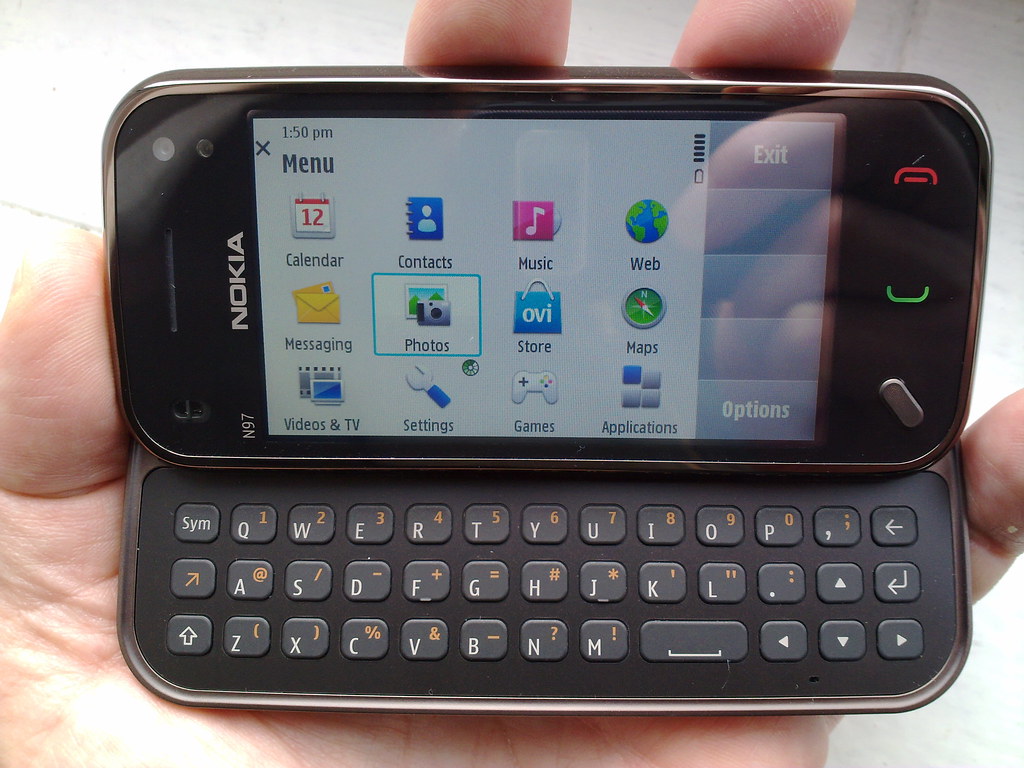
This last is the most salient point, as it's a unique selling point - when entering text in any application, the keyboard provides a foolproof way to enter even tricky text without losing any screen real estate to a virtual equivalent. The keyboard's the same usable one as on the N97, once you get past the non-centred space bar. The form factor is unique to Nokia and refined, of course, in the subsequent E7.
A quick summary of the main differences between the N97 'classic' and the N97 mini, from the latter's point of view:
- 3.2" TFT screen (so smaller and brighter indoors, though slightly harder to read outdoors)
- Cursor keys rather than a d-pad (though neither got much use on my devices, with touch navigation now more common)
- 1320mAh battery rather than a 1500mAh cell
- 8GB mass memory (instead of 16GB, though both also have microSD)
- An extra 256MB of system disk memory (this makes a huge difference, since there's plenty of room for patches, libraries, utility installs and email, etc.)
- No FM transmitter (a bit of a disappointment, at least to me personally)
- Better GPS antenna, no location issues
- Metal back cover, premium materials used
- Unprotected camera glass
For a full illustrated breakdown of the differences, see David's comprehensive comparison of the N97 classic and N97 mini.
There's also my original N97 mini review part 1, though bear in mind that it was written two and a half years ago - the smartphone goalposts have moved on a bit since then(!)
Owning and using a smartphone that can be replaced for such a relatively low amount makes one rather less 'precious' about dropping it, scratching it or otherwise exposing it to the rigours of daily life without a safety net. As with the other 'Pimping' articles in this All About Symbian series, the idea is to take yesterday's 'discarded' hardware and pimp it to something approaching modern standards. It can be done - because I've done it, with a few compromises along the way. What's needed from a hardware and software perspective and where do you get it all from?
Black or white
Although available in both colours (plus a rather rare dark red variant) - get the black one. Having owned the white N97 in the past, I had often remarked how crazy it was to have the QWERTY key legends light up in white on white keys. In bright light and pitch darkness there's no problem, but in everything in between, you just can't read which key is which. As shown below, the black N97/mini colour scheme solves this with perfect key legend visibility in all light conditions.
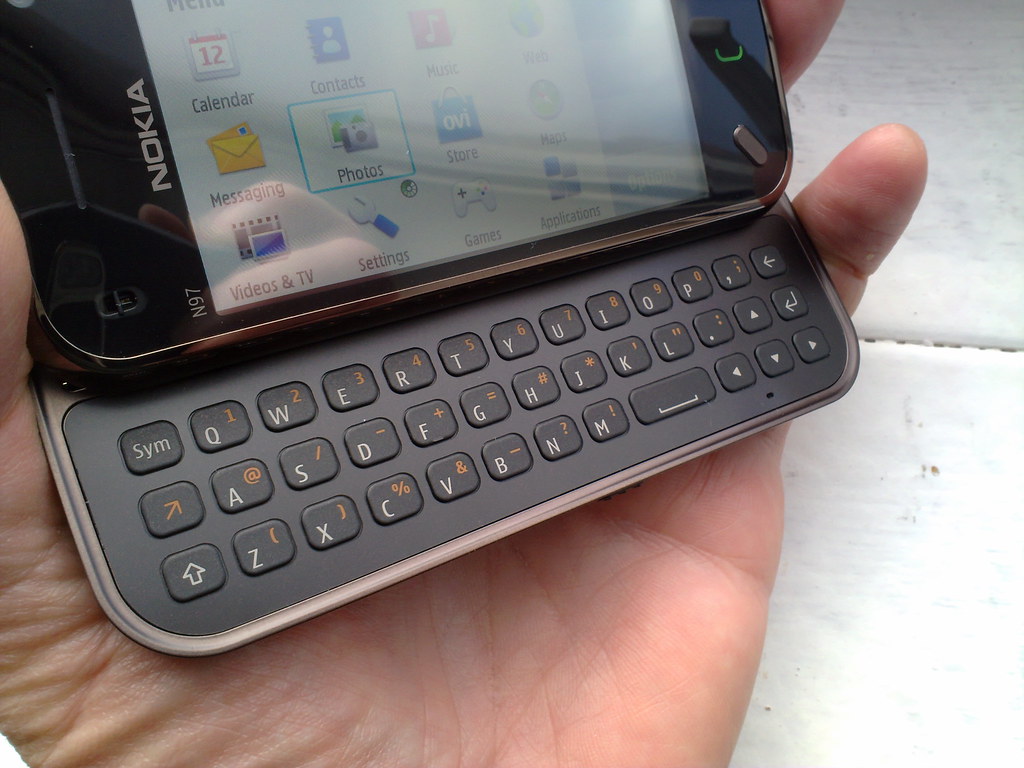
The black N97 mini also doesn't (ahem) show the dirt like the white one does.
Spring clean
Now, this may well be me just being fastidious, but there are practical advantages too, to giving the N97 mini a good physical spring clean. Take a clean cotton cloth and some light screen polish (e.g. that for LCD monitors) and clean up that relatively delicate resistive touchscreen - you don't want any particles of grit gouging into it. You'll also find that a polished and smooth screen makes the touch interface far more sensitive and pleasurable.
And clean up the QWERTY keyboard too, you never know where the previous owner's fingers have been! A cotton bud can help you clean up the camera bay's two regions too. It all helps.

Spare batteries
The N97 mini uses the BL-4D, used in several other Nokia smartphones, including the N8 and E5, which means that there are replacement batteries around (or, simply, spares) if you need them. Buying up spares on the Internet has always been tricky. Nokia's own site quotes top prices, prohibitively so, while unscrupulous eBay sellers show what appear to be genuine batteries but turn out to be fakes. I recommend Amazon here - though avoid their third party sellers with less than perfect feedback and examine the holograms with a fine toothcomb to prove their origin etc.
You can charge the BL-4D in the N97 mini, of course, but it's even better to charge up your spares in something like this.
Latest firmware
It goes without saying that you'll need latest firmware on your N97 mini. Various carrier-supplied N97 minis (like mine, screenshot below - sob!) may be stuck on 'older' versions, but as long as the device is showing (*#0000# on the dialler screen) v12 or higher then you'll be fine. You can update over the air, but if this is part of inheriting an N97 mini from someone else and you're wiping/starting again anyway then it makes sense to use Nokia Suite to reinstall the firmware from scratch and then do an extra hard reset (*#7370# on the dialler, default lock code 12345) just in case.
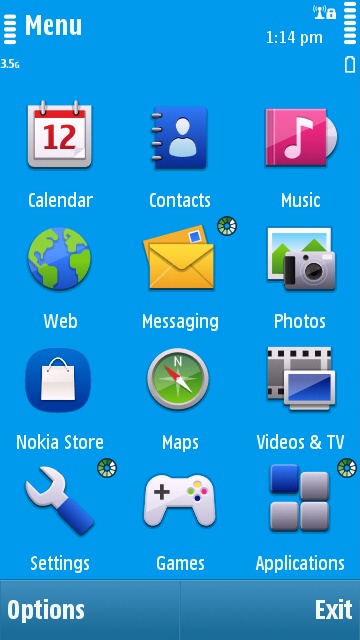
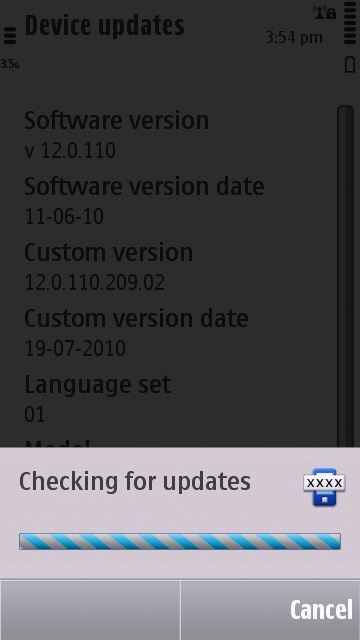
Latest Store
Simply starting the existing Nokia Store client will prompt the installation of the official latest version for S60 5th Edition - it's important to be up to date, to stay in step with changes at Nokia's end, i.e. on the Store servers. Plus it'll be slightly faster and smoother. There are no facilities for being notified about application updates though in this S60 5th Edition client, sadly - you'll need the rewritten Symbian^3 (onwards) version for that.
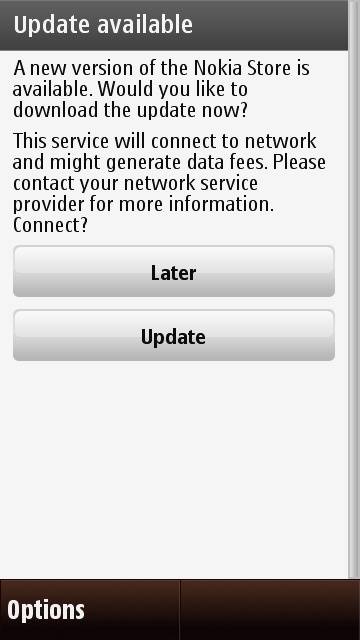
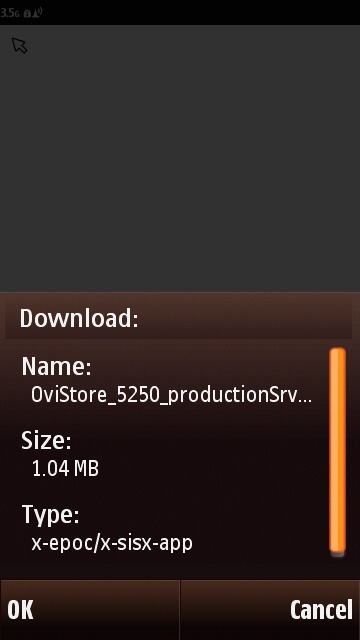
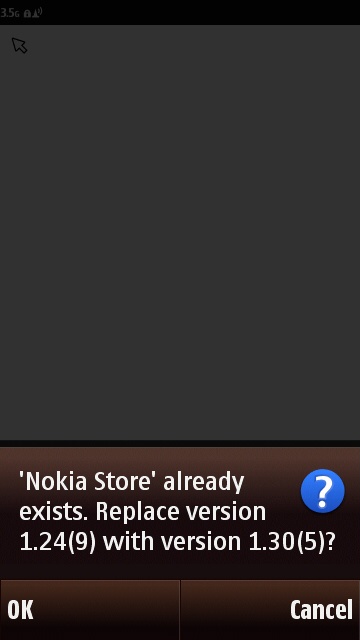
Qt
Most of the most recent third party Symbian applications are built on Qt - involving the installation of the Qt libraries on your device. Unlike on the N97, the N97 mini has plenty of space for these and so Qt apps are welcomed. They won't run as fast as native Symbian apps from days past, but at least they'll run.
You can tell which apps are Qt-based in the Nokia Store because they'll have a brief warning about possibly having to download one-time modules. Don't worry about these, apps will grab any Qt updates as and when they need to and you'll be warned before this happens.
To get started with Qt, simply pick a decent Qt-needing application (e.g. Twimgo, a Twitter client, below) or (bottom) What Car? Valuations, and install it from the Nokia Store. The Qt runtimes will take a few minutes to install, but subsequent installs will be far faster.
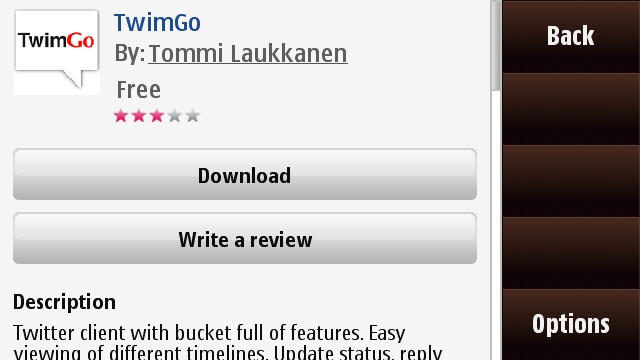
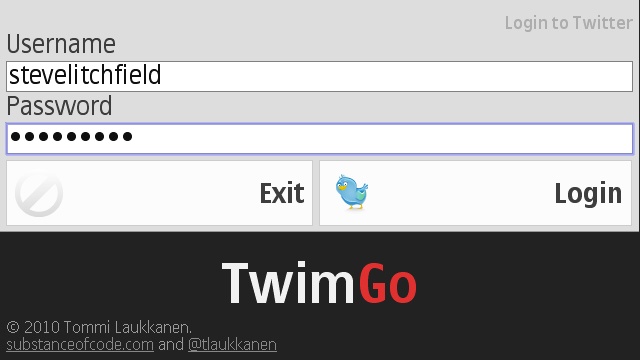
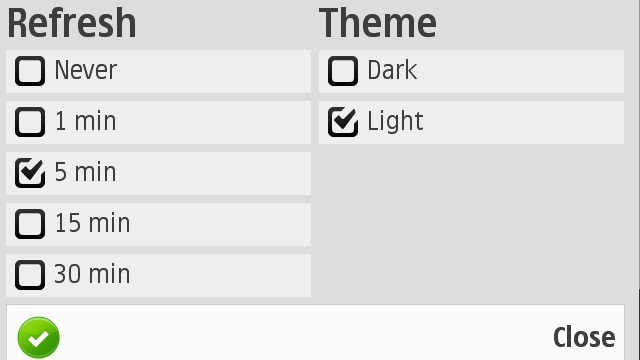
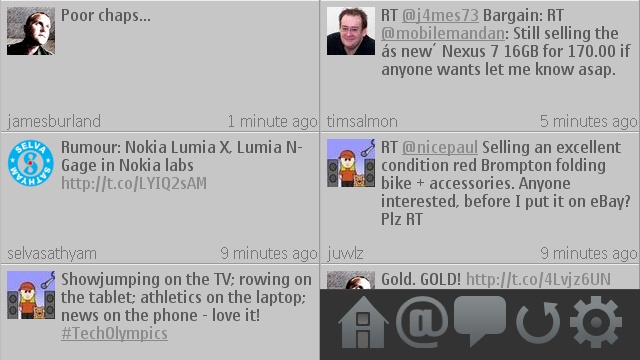
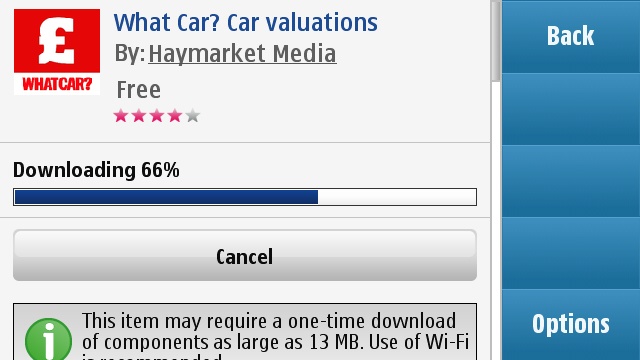
Updates
Mainly supplied through 'Sw_update' (in your Applications folder), Nokia have pushed a fairly large number of patches and additions, most of which can be happily accepted because of the abundance of system disk space on the 'mini':
- Gig finder (non essential)
- N-Gage (games system, now sadly defunct, you can ignore this one)
- Ovi Music (non essential for most people)
- Quickoffice (v4.2 - if you do need the latest version, Quickoffice Pro, and with full document editing, then perhaps get it from the Nokia Store instead, to update in one big swoop rather than a half-hearted Sw_update upgrade and subsequent editing patch)
- MailforExchange (needed if you want to try connecting to an enteprise mail system)
- Time zone update
- Here and now (is this still a current product?)
You should also see an update to 'Nokia Email' in Sw_update, which does work pretty well these days, with a few caveats:
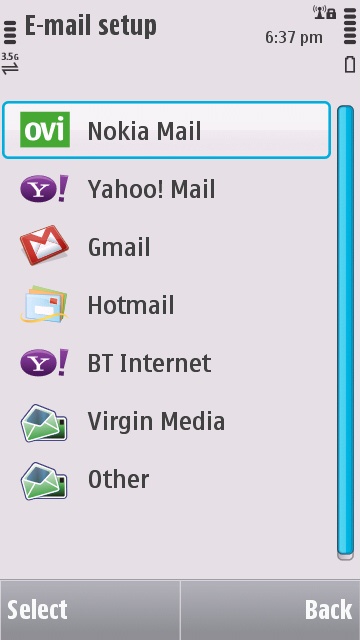
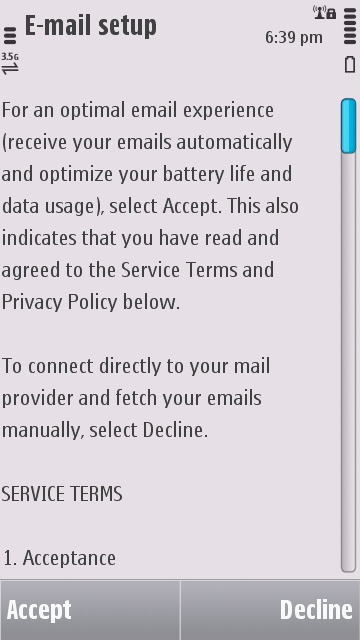
When setting up a mailbox, there's the choice of accepting Nokia Email's terms and routing all your email through Nokia's servers (which still works) or using 'Decline' and choosing to use standard IMAP protocols to connect to your email provider directly. I usually go for the latter, figuring that I don't really want my email routed through third party servers which may or may not stay 'up', especially in the light of Symbian's current resource decline at Nokia.
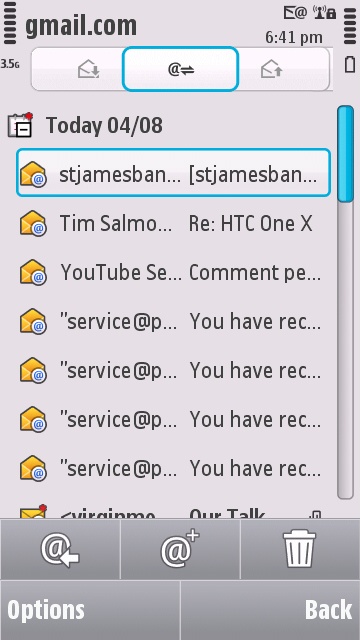
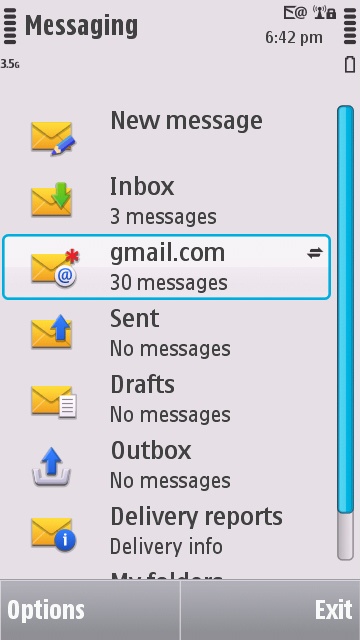
Nokia Email does work OK, once set up, though it's generally slow, doesn't handle HTML messages well and doesn't handle email header display very efficiently in either portrait or landscape modes. At least it's integrated well into Messaging generally, as shown above right.
Maps
Nokia Maps 3.6 should be offered through SW_update, but in case it's not (it wasn't on my O2-originating N97 mini) then don't worry - v3.6, under its previous name of 'Ovi Maps' is up for download in the Nokia Store. It'll automatically remove any copy of Ovi Maps you already have (e.g. v3.4) and then install itself cleanly. Worked a treat for me and v3.6 of Ovi/Nokia Maps is stunningly good, even compared to the latest sat-nav on other 2012 mobile platforms.
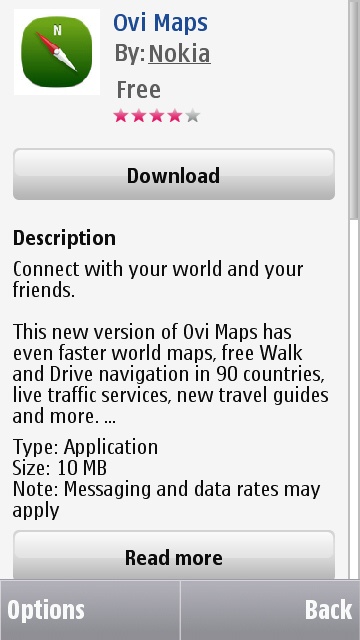
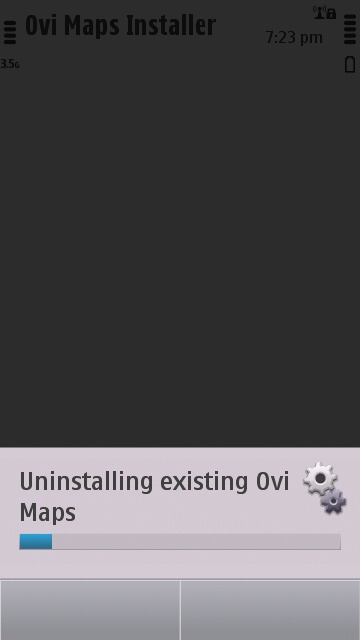
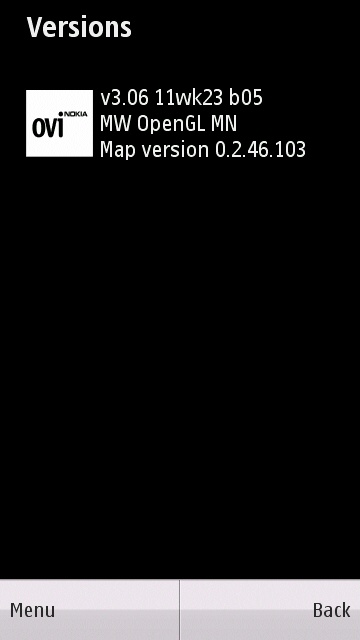
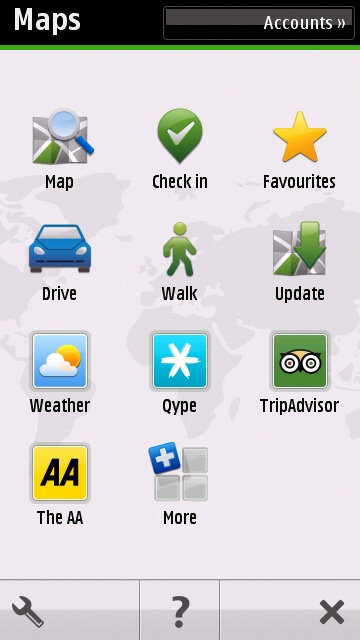
Do double check that the N97 mini is using the right cellular access point for Assisted GPS. Look in Settings > Application settings > Positioning > Positioning Server - it needs to be explicitly set to your main cellular data access point, e.g. Vodafone. Without Assisted GPS set up properly, GPS fixes take ten times longer because the phone's GPS has no idea where the satellites are in the sky, etc.
Also well worth checking are that you have the latest offline maps. Nokia Suite provides a way to load an entire country's worth of maps into the N97 mini's mass memory. In fact, more than that, it'll also keep an eye on map updates and, when these get updated on the server with new detail, it'll prompt you to have these upgraded too. Very cool.
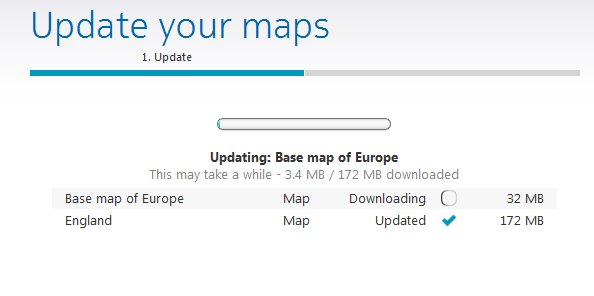
RAM management
There are two possible approaches to managing the most precious resource on the N97 mini: RAM. And no, this is totally different to the disk C: space problem on the N97 'classic', even though Nokia confuses the issue by calling them both 'memory'.
Approach one is to let Symbian OS do its thing, closing apps when you run out and generally trying to fit a quart into a pint pot. It works well enough if you're fairly gentle with your apps and 'Exit' the heavy duty ones (Web, Photos, Maps, etc) manually when you're done with them.
Approach two is to install RAMBlow, which runs every so often and 'tidies up', terminating running apps which you haven't used for a set period of time and optionally also compressing and defragmenting RAM to give you the maximum possible free. The system really does work quite well and RAMBlow also doubles as a task manager.
Applications that you need kept running at all times (because you want them instantly available, even a day or so later - Podcasting, Music player, Clock, in my case) can be toggled as 'protected', meaning they won't get terminated as part of a RAM clean-up.
The only catch is that RAMBlow is relatively expensive, at $15 - but there's a free trial version so you can justify it to yourself (or not) after a week of actual use. With RAMBlow installed you should never see an 'Out of memory' error again. In theory!
Application notes
Skype, in its pure Symbian form, is well worth grabbing from m.skype.com, as it works brilliantly for IM and VoIP calls.
Much has been said about Symbian's S60 5th Edition Web browser, so I won't repeat that all here, except to say that it's still crippled on the N97 mini because of the relative lack of free RAM. Instead, install the latest version of Opera Mini 'for Symbian/S60' from m.opera.com. This has a familiar browser interface but uses server-side compression of pages and is dramatically faster when browsing complex sites.
PhoneTorch works well to turn the N97 into a dual LED torch, for those forays into the back yard after dark, especially so because there's no camera shutter over the LEDs, as you have on the 'classic'.
One of the biggest losses to day to day usability on the N97 mini is that of telling the time - the keylock screen just pops up a 'how to unlock' message - the underlying display may or may not show a clock. Make a beeline for the excellent Key Lock Clock. Once installed (and the device restarted), this utility acts to pop up a clock at normal brightness whenever you press the main N97 menu button - without disturbing the keylock itself.
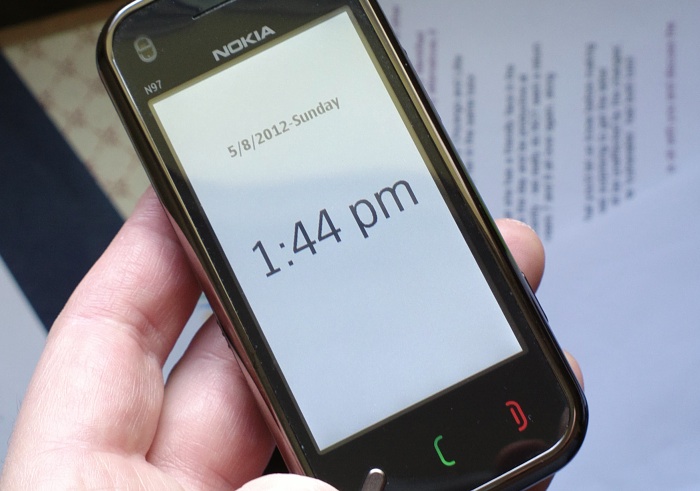
If Nokia Email doesn't work well for you (and trust me, it can be an acquired taste, depending on where your email is hosted), spare a thought for the ultra-quirky but also ultra-configurable Profimail - you'll hate it for the first hour, then the penny will drop and you'll love it for the rest of your life.
Other S60 5th Edition favourites which made their way onto the editorial pimped N97 mini were Nokia Internet Radio, a bundle of Offscreen utilities, including Egg Timer and Converter, the official Facebook client, and the popular Gravity Twitter client.
Settings tips
I mentioned brightness and keylocking above. The N97 mini's screen is TFT and the impact of running the screen 'frontlight' on full brightness is quite a bit less than if the same were done with (say) a white theme on a modern AMOLED device. Thus, there's no real reason not to go into Settings/Phone/Display and crank the 'Light sensor' up to full. Your N97 mini's display will almost look modern. Almost!

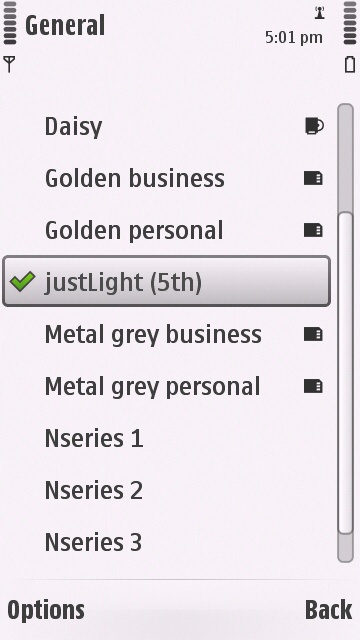
In addition, you can opt for a nice bright theme to make the display as clear as possible, without worrying about AMOLED power wastage. I'm a big fan of the simple Just Light theme, which is incredibly efficient and uses hardly any RAM - which means more for your applications. Try to resist the temptation to install that pretty 3MB theme from your favourite novelties site - it'll slow the N97 down and will decrease usability.
On the keylocking front, I find all the S60 5th Edition devices to be rather annoying in that with the screen off, it's not clear whether the screen's just powered down and waiting for a keypress or whether the device is actually keylocked. So you toggle the keylock and... it turns that the screen was just off, so congratulations, you just locked it for real. And now you've got to wait a second and toggle it again to bring the device back on again.
I avoid this scenario by going into Settings/Phone/Phone management/Auto keyguard and turning the 'Keypad autolock period' 'Off'. Thus, the only time the N97 mini will be keylocked is when I've done it explicitly. If the screen is then off under normal circumstances I know the device isn't keylocked and can just press the main front-face menu button to bring it back to life.


Homescreen matters
The N97's variant of S60 5th Edition (in)famously introduced the widgetised homescreen. I say 'infamously' because the default selection included two huge RAM guzzlers, both just as dangerous on the N97 mini: Facebook and Accuweather. Delete these two widgets and the N97 mini starts to sing. Well, hum at least, with well over 10MB more free RAM.
Modern Symbian^3 phones now have up to three such homescreens, but you may recall that I'm not so sure having more than one is a good idea from a conceptual point of view. In which case the single homescreen of the N97 mini is perfectly good enough. My pimped N97 mini ended up with Calendar, Music player, Favourite contacts and application shortcuts on its homescreen. All offline content, you'll note, but this has RAM and battery life benefits. Besides which, every online widget I've tried, whether email or social or weather, has required me to tap it anyway, to bring up the full app for any serious use - so why not simply have that application as a 'shortcut' and save lots of homescreen real estate?
Battery strategies
In my estimation, the biggest Achilles heel of the N97 mini was its battery life. A 1200mAh cell should have been just about acceptable, but in practice the device always seemed to burn through the charge faster than I'd expect. With the latest firmware and software patches, detailed above, I'd hope that efficiency should be higher now, at least with a newish BL-4D installed.
Things you can do to help battery life:
- When travelling (and therefore in areas of varying signal strength), turn off 3G, which is a huge power drain when conditions are bad. Go into Settings>Connectivity>Network and set 'Network mode' to 'GSM'. You'll still get EDGE data much of the time, with typical N97 mini performance I doubt you'll notice any difference to the device's speed.
- Turn the display brightness down in Settings>Phone>Display.
- Turn Bluetooth off when you're not actively using it.
_____________________________________
Pimped?
For its size and (now) cost, the N97 mini is a stunningly useful smartphone. It's at the polar opposite end of every smartphone spectrum to the iPhones of this world, but with a little pimping it might just make a super backup device, super cheap and (by modern standards) super-small.
And it has just been pimped!

